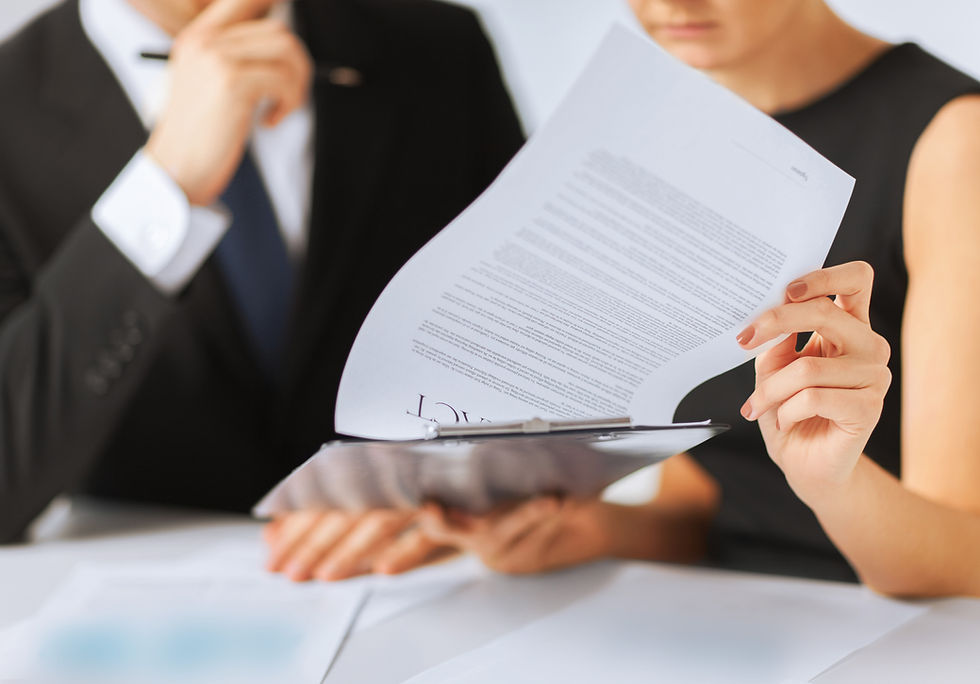The Responsibility of Minors
- Dr Jurgen Micallef

- Feb 3, 2022
- 5 min read
By Dr Jurgen Micallef - Paralegal
This article is the first part of a two-part series of articles about the responsibility of minors at law.

The law on civil responsibility is fairly simple; if you intentionally or carelessly cause damage to something or someone, then you must compensate for the damage caused. As with most issues before the Courts of Justice, however, things are never so simple. What if, for instance, you suffered harm because a vicious dog attacked you? Or because a poorly-constructed balcony fell on your car? Certainly, you wouldn’t even consider taking the dog or the balcony to court in order to obtain compensation. Instead, you pursue legal action against the owner or carer of the dog, or against the owner of the building. It would be the only reasonable and logical thing to do.
The reason is obvious - irrational or inanimate objects are incapable of being held responsible and consequently, pay out compensation. Even more so, our general provision on the law on civil responsibility clearly states that: “Every person, however, shall be liable for the damage which occurs through his fault”.
What if, this time, harm is caused by a child? Would you, then, consider pursuing legal action against the child? The law does indeed state that any person shall be held liable, and a child is a person, so why not take the child to court?!
Again, things are never so simple. Nevertheless, the legislator catered for this particular instance, in numerous ways. In this article, we shall be dealing with the principal rule, where the law states that persons having charge of a minor shall be liable for any damage caused by the minor only if the person in charge fails to exercise the care of a reasonable person (termed as the ‘bonus paterfamilias’ in legal parlance) in attempting to prevent the act which caused harm.
Two interesting points emerge; first, the law does not state that the parents or guardians of the minor are responsible at all costs; it is the ‘person in charge’ who shall be responsible, should it be the case. Secondly, just because a child causes harm, the law tells us that the person in charge is not automatically responsible. The person in charge is only responsible if he or she could have prevented the harmful act, but did not do anything to indeed prevent it.
The person in charge’s level of care was dealt with in the case of Patrick Bezzina vs. Ministry of Education et (confirmed by the Court of Appeal in 2008). What happened here was that a student caused harm to another student, leading the latter being blinded in one eye. During this incident, it transpired that the teacher had absented himself from the classroom. Since the accident occurred in a classroom and during school hours, there wasn’t any doubt that the parents/guardians weren’t responsible. However, the Court went on to state that the Education authorities are responsible for the care of the children just as the parents are responsible for them when the children are under their direct care.
In a more famous case by the names of Pasquale Zerafa vs. Carmelo Gauci (1955), the Court had also stated that other persons — asides from the parents or guardians — may also have temporary custody of the children, such as when the child is at school. The shift of custody implies the shift of responsibility. In this case, a child caused harm to the plaintiff when he threw a tin can and consequently hit the plaintiff in the face, causing him substantial harm. At the time the accident occurred, the child was not accompanied by his parents or teacher. For that matter, the child was not even accompanied by a person of age at all.
The legal question which the Court had to deal with was whether the defendant (ie. the father of the child) should be held responsible for the child’s action, despite him not having physical custody of the child at the time the accident took place. In dealing with this matter, the Court explained that although the law specifies and refers to the ‘person having charge’ of the child, this should not be narrowly interpreted. The person having legal custody is also responsible when the child is not accompanied by a person of age, ie. another person who is capable of having legal custody of the minor, such as the teacher in a classroom setting. The reason for this is because the parents or legal guardians of the minor in question are vested with what is called the patria potesta — the authority to exercise parental authority over the minor.
Thus, should a fight breakout outside of the school’s premises and after school hours, the parents or guardians of the minors are likely to bear civil responsibility for the harm or damage caused.
However, does this mean that the person having legal custody is always responsible, at all costs? Certainly not. The law states that the person in charge is only responsible insofar as he or she could have prevented the act but did not do so. However, in order for a parent or guardian to be exonerated from civil responsibility, he or she must indeed prove that nothing else could be done to prevent the harmful act caused by the minor. For example, the minor’s father in the case of Joseph Borg vs. Peter Paul Grech pro et noe, had defended his case by telling the Court that he had scolded his minor son several times after finding out that his son took his car keys and drove off. The Court did not accept this argument. Instead, the Court went on to hold the father responsible (as well as the minor son who, by the time the case was decided, became of legal age) for the damage caused by his then minor son. The Court had also admonished the father for letting his car keys easily accessible.
Evidently, the presumption with respect as to whom should be held accountable when minors cause harm or damage is against the parents/guardians. However, this certainly does not mean that the parents or guardians are responsible at all costs. Indeed, there may be situations where the parents/guardians have done everything possible to prevent the harmful act from taking place, though without any success.
In the next article, we shall look at how the law creates a distinction between damage caused by children under 9 years of age, children who have not yet reached the age of 14, and what happens when the parents/guardians cannot be held responsible.
Dr Jurgen Micallef is a Paralegal at PROLEGAL Advocates.
Disclaimer: This article is not to be construed as being legal advice, and is not to be acted on as such. Should you require further information or legal assistance, please do not hesitate to contact us at info@prolegal.mt.



